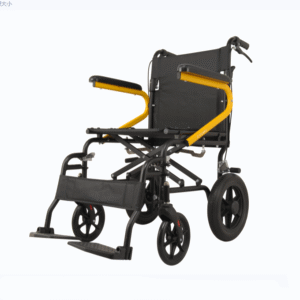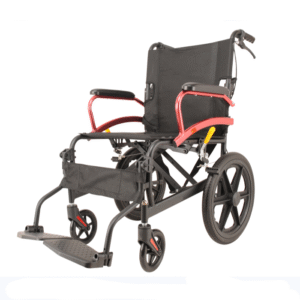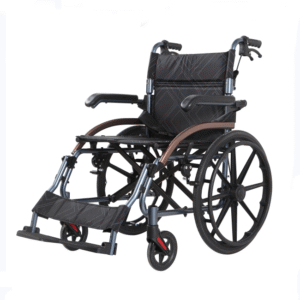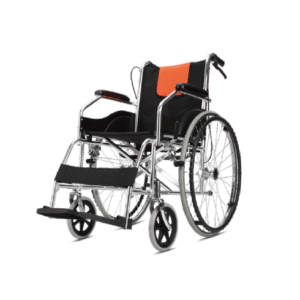Super Handy Wheelchair: 5 Key Questions Answered—From Features to User Fit & Daily Use
Mobility aids thrive when they adapt to your life—not the other way around. A super handy wheelchair is designed to do exactly that: combine portability, ease of use, and versatility to fit seamlessly into daily routines, whether you’re navigating a small apartment, traveling by car, or running errands. But what makes a wheelchair “super handy,” and is it the right fit for you? Here are 5 critical questions answered.
1. What Defines a "Super Handy Wheelchair," and How Is It Different?
A super handy wheelchair prioritizes “usability” above all—engineered to reduce effort for users and caregivers alike. Unlike bulkier standard models, its core traits include:
- Lightweight Design: Most weigh 20–35 lbs (manual) or 40–60 lbs (powered), far lighter than standard wheelchairs (35–50 lbs manual, 70+ lbs powered). This makes lifting, folding, and maneuvering significantly easier.
- Folding Simplicity: Many feature one-handed folding or auto-folding (via a button on powered models), collapsing in under 10 seconds. Folded dimensions often shrink to 28x18x12 inches—small enough to tuck into a closet or the backseat of a sedan.
- Intuitive Controls: For powered versions, joysticks are responsive and positioned for easy reach; manual models have ergonomic hand rims that require less upper-body strength to propel.
- Space-Saving Build: Narrower frames (20–24 inches wide) fit through tight doorways and hallways, while adjustable footrests and armrests adapt to different user heights without adding bulk.
2. What Key Features Make It "Super Handy"?
The “handiness” comes from intentional design choices that solve daily headaches:
- Ultra-Light Frames: Aircraft-grade aluminum or carbon fiber alloys cut weight without sacrificing strength. For example, a 25 lbs aluminum frame is light enough for most seniors to lift into a car trunk unassisted.
- Auto-Lock Folding: When folded, built-in locks keep the wheelchair compact, preventing it from unfolding unexpectedly during transport—critical for caregivers carrying it up stairs.
- Compact Wheels: Smaller rear wheels (8–12 inches) improve agility in crowds, while large casters (5–6 inches) glide over thresholds and rugs without getting stuck.
- Tool-Free Adjustments: Seat height, footrest angle, and armrest width can be adjusted by hand, no wrenches needed—ideal for users who share the wheelchair or change positions frequently.
3. Who Benefits Most from a Super Handy Wheelchair?
This design shines for users who value flexibility and independence:
- Seniors with Mild Mobility Issues: Lighter weight and easy folding reduce reliance on caregivers for tasks like loading the wheelchair into a car.
- Active Users: Those who travel, shop, or attend events regularly appreciate the portability—no more struggling to fit a bulky chair into a taxi or restaurant booth.
- Small Space Dwellers: Apartment or condo residents with narrow hallways (under 30 inches wide) will find these chairs navigate tight turns without scraping walls.
- Short-Term Recovery Patients: After surgery or injury, a super handy wheelchair makes temporary mobility support less disruptive to daily life (e.g., folding it out of the way when not in use).
4. How Does It Perform in Real-Life Scenarios?
Its true value emerges in everyday moments:
- At Home: Maneuvering around kitchen islands or between furniture is effortless, thanks to the narrow frame. Folding it up after use keeps living spaces clutter-free—no more leaving a bulky wheelchair in the middle of the room.
- Travel: Most models meet airline carry-on standards (folded dimensions under 62 linear inches), avoiding checked baggage fees. For road trips, they fit easily in SUVs, hatchbacks, and even compact cars like a Toyota Corolla.
- Public Spaces: Crowded grocery stores, cafes, or public transit are manageable. The lightweight build makes it easy to pivot around shoppers, while the narrow width slides through busy aisles without bumping displays.
5. What Should Buyers Consider Before Choosing One?
To ensure it fits your needs, keep these in mind:
- Weight Capacity: Most handle 250–300 lbs; opt for “heavy-duty handy” models (300–350 lbs capacity) if needed—they add 5–7 lbs but retain foldability.
- Manual vs. Powered: Manual models ( $400–$800) are lighter and cheaper, best for users with some upper-body strength. Powered versions ( $1,500–$3,000) suit those with limited strength but require charging and are slightly bulkier.
- Maintenance: Lubricate folding hinges monthly with silicone spray to prevent sticking. Check wheel locks weekly—they should engage firmly to avoid rolling on slopes.
- Test Before Buying: If possible, trial the wheelchair in a store. Fold/unfold it, push it over carpet and tile, and simulate lifting it into a car—comfort with these actions is key.
Conclusion: Why "handiness" matters for long-term satisfaction
A super handy wheelchair isn’t just “convenient”—it’s empowering. By reducing the effort needed to transport, store, and use it, it lets users focus on living independently. Whether you’re a senior, a traveler, or recovering from an injury, its design ensures mobility support fits your life, not the other way around.
Thank you for reading this, dear, if you have any suggestions about our website or want to know about wheelchair, please contact us. We will respond quickly.



